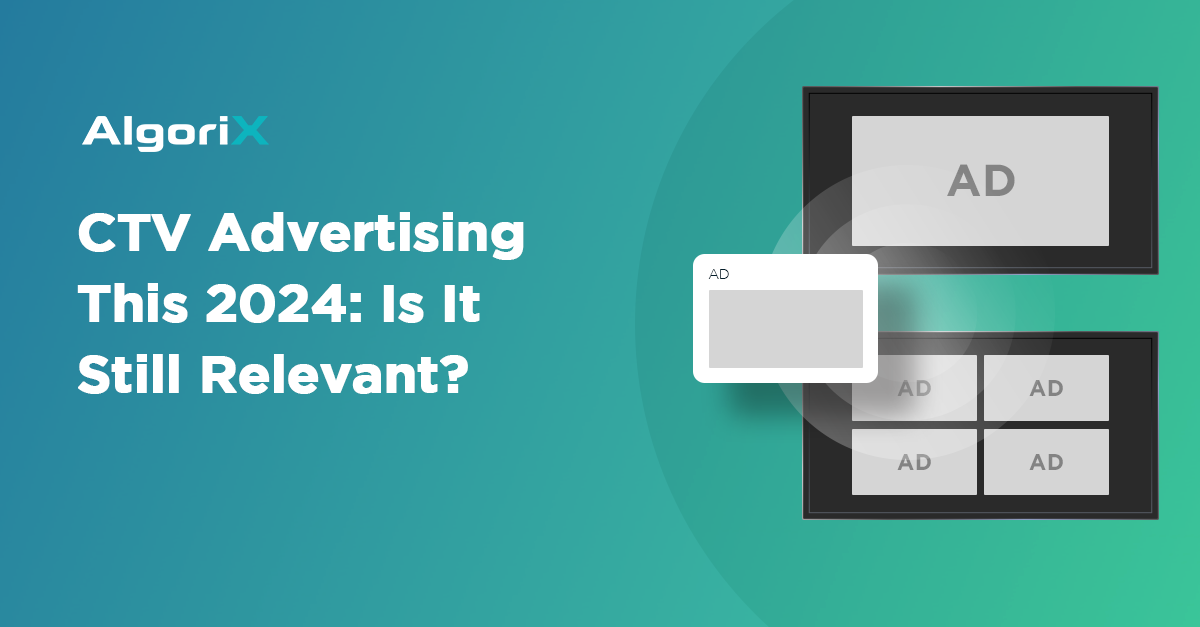Over the past few years, Connected TV (CTV) has seen a meteoric rise in popularity and adoption. This rise is due to a surge in streaming content consumption and the proliferation of smart TV devices. Advertisers have eagerly tapped into this trend, leveraging CTV’s capabilities to deliver targeted, engaging content directly into viewers’ living rooms.
Yet, as the digital advertising ecosystem continues to evolve at a breakneck pace, one can’t help but wonder: Has CTV advertising reached its zenith, or does it still hold untapped potential for innovation and impact? With changing consumer behaviors, technological advancements, and shifting market dynamics, the relevance of CTV advertising is a subject ripe for exploration.
CTV Advertising and Its Relevance This 2024
Let’s dive into what makes CTV advertising a worthy investment for this year.
Shifts in consumer behavior
The transformation in consumer media consumption patterns has been significant. Recent studies indicate a marked preference for streaming services over traditional TV, with a notable uptick in CTV adoption across diverse demographics.
Connected TV has users from all age groups, though specific demographics are more predominant. Most CTV viewers fell within the 18 to 34 age bracket, with nearly two-thirds of those surveyed engaging with these platforms daily. In contrast, about 27% of individuals aged 55 and above used CTVs to watch videos daily.
This shift is not merely about the choice of platform but the search for content that aligns with individual interests and schedules. CTV advertising capitalizes on this trend by offering targeted, relevant ads that engage viewers without the intrusion commonly associated with traditional advertising methods.
CTV platforms offer a wide array of content catering to diverse interests and demographics. This variety attracts more viewers and enables advertisers to target niche audiences.
Viewers on CTV platforms tend to be more engaged, partly due to the choice-driven nature of content consumption. Advertisers recognize the value of this engagement and leverage it to capture the attention of potential customers in a less cluttered, more impactful environment.
Technological Advancements
The technological strides in CTV advertising have been nothing short of revolutionary. Enhanced targeting capabilities, powered by AI and machine learning, enable advertisers to reach specific audiences with unprecedented precision.
These advancements extend beyond targeting, incorporating sophisticated measurement and analytics tools. This allows for real-time adjustments and optimizations, ensuring campaigns achieve maximum impact and ROI. The seamless integration of interactivity features further enriches viewer engagement, transforming passive viewing into an interactive experience.
Additionally, the technology behind CTV allows for innovative ad formats, including interactive and shoppable ads. These formats enhance viewer engagement and offer direct pathways for viewers to act on their interests, bridging the gap between advertisement and purchase.
Cost Efficiency and Flexibility
One of the most compelling arguments for the continued relevance of CTV advertising lies in its cost efficiency and flexibility. Unlike traditional TV advertising, which often requires significant upfront investment and long-term commitments, CTV advertising offers more scalable and flexible options.
Advertisers can start with smaller budgets, adjust real-time campaigns, and optimize based on performance data. This level of agility is particularly advantageous in a rapidly changing market, enabling brands to stay responsive to consumer preferences and market dynamics.
CTV and Omnichannel Marketing
CTV advertising comes with challenges, yet it offers numerous advantages that appeal to both media buyers and sellers. The experience for viewers is similar to traditional TV, but CTV advertising goes a step further by allowing for more precise targeting. This approach is possible using contextual and behavioral data to time ads with specific shows and genres.
One of CTV’s most exciting features is its role in omnichannel video marketing. Nowadays, people watch videos on various devices throughout the day. For example, they watch TV shows on a phone during a commute and catch up on news on a computer at work. Some even stream shows on a smart TV at night. This data presents a unique opportunity for advertisers to connect with viewers across different platforms, from linear and on-demand to live-streaming TV.
Advertisers can more effectively synchronize ads across devices, integrating users’ viewing habits with their digital accounts, like social media. This enables brands to run omnichannel video campaigns that target audiences more precisely across different devices and platforms. They can use insights from social media profiles to display highly relevant ads on CTV, mobile, and desktop.
Frederic Liow, Chief Revenue and Operations Officer at AlgoriX, shares that CTV this 2024 will allow media planners to track their campaigns’ performance in real-time, resulting in immediate optimization based on performance metrics. He adds, “CTV is increasingly used not just for brand but also performance campaigns, extending the reach and retargeting audiences across devices.”
New Standards on Inventory
The evolution of CTV advertising is also reflected in the development of new standards for inventory quality and transparency. Industry initiatives aim to address ad fraud and viewability concerns, establishing more transparent benchmarks and protocols.
AlgoriX advocates these standards to maintain trust and confidence among advertisers. AlgoriX’s approach to curating premium inventory involves meticulous vetting, ensuring that each content provider meets high-quality standards. This commitment to quality is about offering advertisers better visibility and enhancing the viewer’s experience.
We help advertisers achieve deeper engagement and higher conversion rates by prioritizing content that resonates with viewers.
So, is CTV advertising still relevant in 2024? The definite answer is yes.













